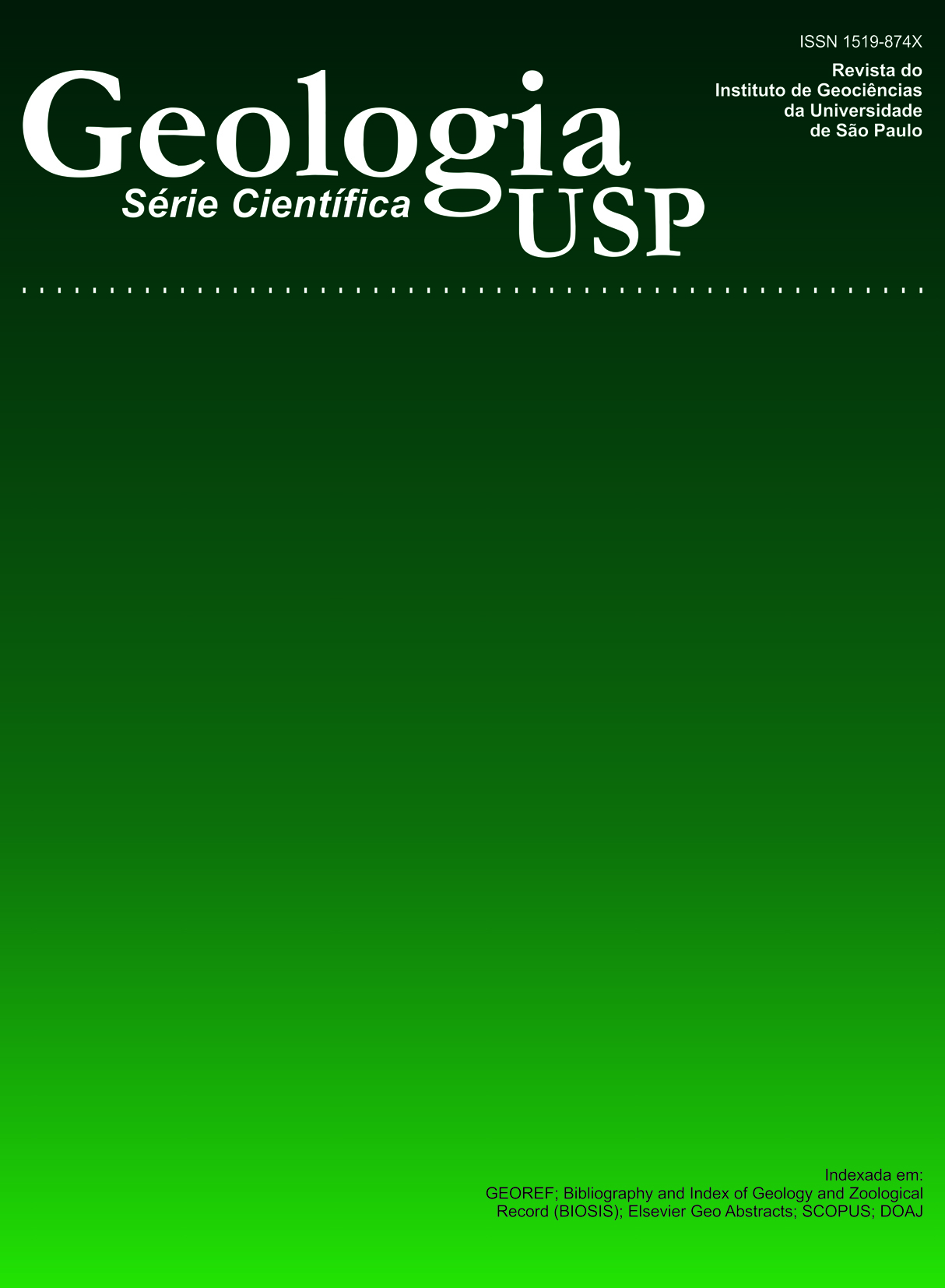Stratigraphy, depositional architecture and facies analysis of the Missão Velha formation (Neojurassic-Eocretaceous) in the type-area, Araripe basin, northeastern Brazil: an example of sedimentation of rift initiation to rift climax transition
DOI:
https://doi.org/10.5327/Z1519-874X2011000200004Keywords:
Araripe Basin, Missão Velha Formation, Facies, Architectural elements, Depositional systemsAbstract
The aim of this study was to carry out a stratigraphic revision of the Missão Velha Formation (Araripe Basin, northeastern Brazil) based on detailed facies analysis, architectural elements, depositional systems and palaeoflow data. The main facies are: 1. coarse-grained conglomeratic sandstones and locally pebbly conglomerates, with abundant silicified fossil trunks, several large-to medium-scale trough cross-stratifications and predominantly lenticular geometry; 2. medium-to coarse-grained lenticular sandstones with granules, abundant silicified fossil wood and trunks, and large-to medium-scale trough cross-stratifications, cut-and-fill features and mud drapes on the foreset cross-strata; 3. conglomerates and poorly sorted medium-grained sandstones with sparse pebbles and horizontal stratification; 4. fine-to very fine-laminated silty sandstone interlayered with 5. decimetric pelitic layers with parallel stratification and climbing-ripple cross-lamination. Ten architectural elements were identified: CH: Channels, GB: Gravel bars and bedforms, SG: sediment gravity flows, SB: Sand bars and bedforms, SB(p): sand bedform with planar cross-stratification, OFch: Overbank flow of channel (levee, crevasse and channel splay), DA: Downstream-accretion macroforms, LS: Laminated sand-sheet, LA: Lateral-accretion macroforms and FF: Floodplain fines. Not all of these features were observed at each outcrop. These elements, which are defined by their geometry and bounding surfaces, form the basis for interpreting depositional environments. The Missão Velha Formation is interpreted as: a. high energy braided fluvial systems with fining-upward cycles, channelized features, truncated cross-strata (diastema), lenticular geometry, channeled sandstones, sparse pebbles and b. meandering river systems due to the presence of flood plain deposits, crevasse splays and point-bars deposits. Aeolian deposits can also occur.Downloads
Downloads
Published
2011-08-01
Issue
Section
Articles
License
Authors who publish in this journal shall comply with the following terms:
- Authors keep their copyright and grant to Geologia USP: Série Científica the right of first publication, with the paper under the Creative Commons BY-NC-SA license (summary of the license: https://creativecommons.org/licenses/by-nc-sa/4.0 | full text of the license: https://creativecommons.org/licenses/by-nc-sa/4.0/legalcode) that allows the non-commercial sharing of the paper and granting the proper copyrights of the first publication in this journal.
- Authors are authorized to take additional contracts separately, for non-exclusive distribution of the version of the paper published in this journal (publish in institutional repository or as a book chapter), granting the proper copyrights of first publication in this journal.
- Authors are allowed and encouraged to publish and distribute their paper online (in institutional repositories or their personal page) at any point before or during the editorial process, since this can generate productive changes as well as increase the impact and citation of the published paper (See The effect of Open Access and downloads on citation impact).
How to Cite
Fambrini, G. L., Lemos, D. R. de, Tesser Jr., S., Araújo, J. T. de, Silva-Filho, W. F. da, Souza, B. Y. C. de, & Neumann, V. H. de M. L. (2011). Stratigraphy, depositional architecture and facies analysis of the Missão Velha formation (Neojurassic-Eocretaceous) in the type-area, Araripe basin, northeastern Brazil: an example of sedimentation of rift initiation to rift climax transition . Geologia USP. Série Científica, 11(2), 55-87. https://doi.org/10.5327/Z1519-874X2011000200004





